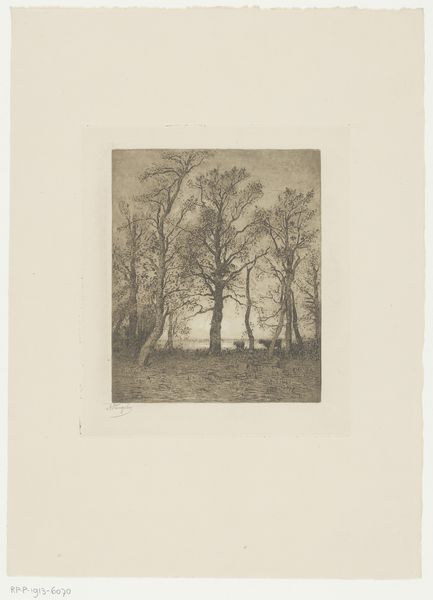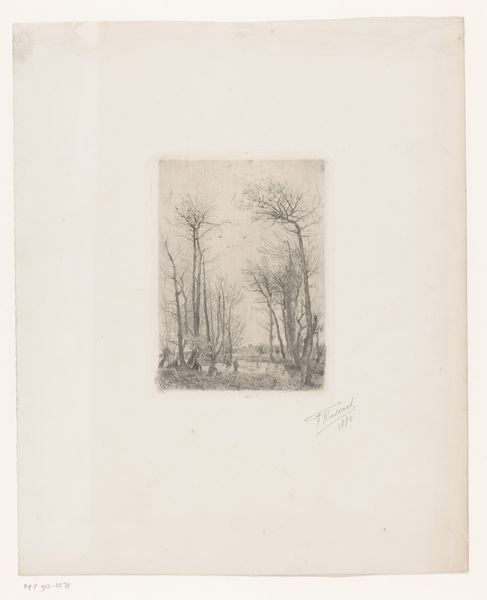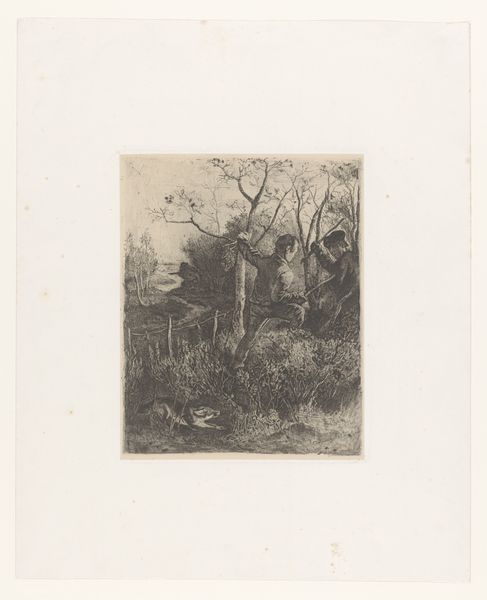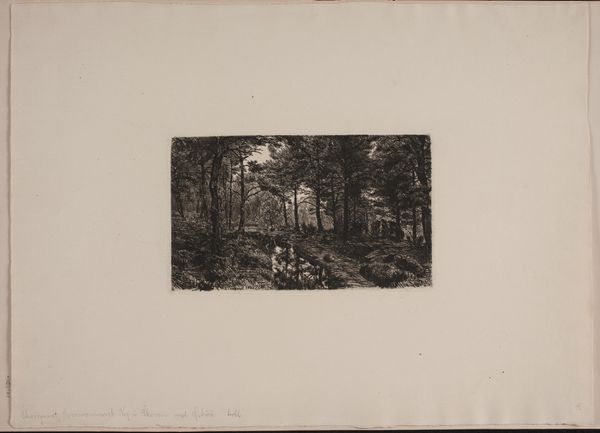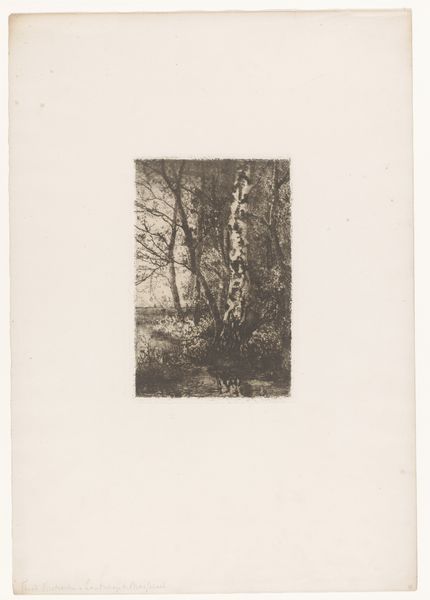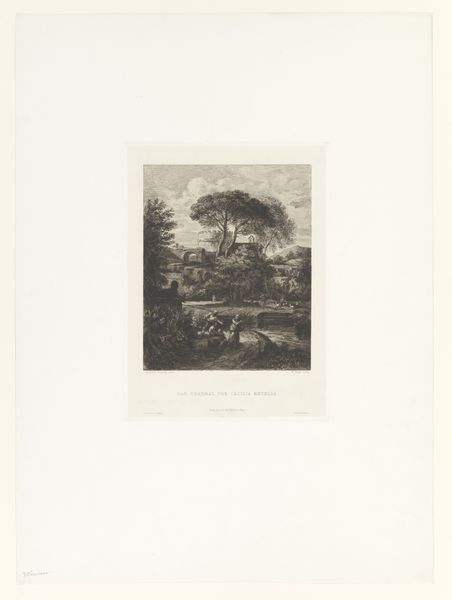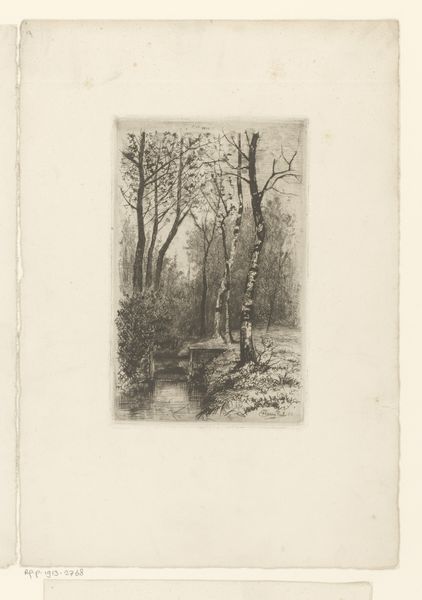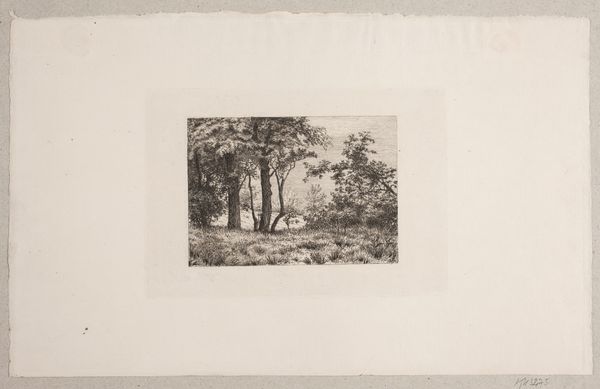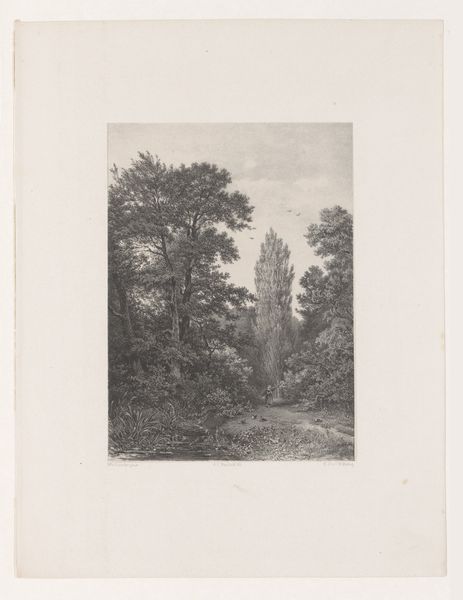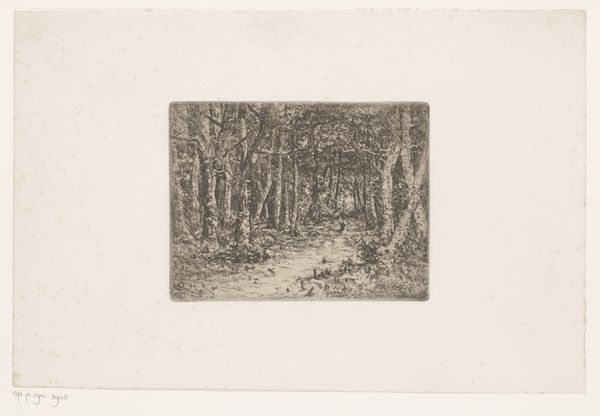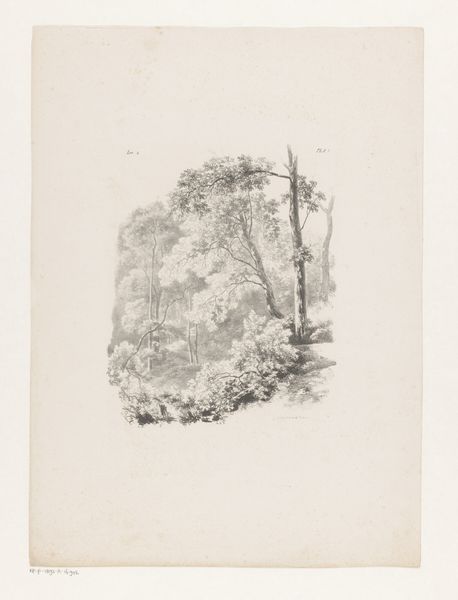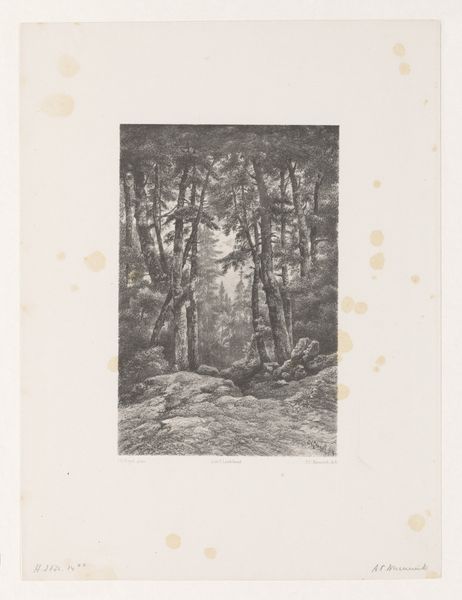
drawing, print, etching
#
drawing
# print
#
etching
#
landscape
#
realism
Dimensions: 128 mm (height) x 102 mm (width) (Plademål)
Curator: This is "Fyrreskoven," or "The Pine Forest," an etching by Niels Skovgaard, created in 1883. Editor: Immediately, I see this constrained palette as a stark contrast to romantic visions of untouched wilderness. It’s so somber. Curator: As an etching, this work gives us a real sense of the labor involved in producing the image. We see the results of a carefully controlled process. How the acid interacts with the metal plate dictates the final appearance. It removes some of the artist’s hand. Editor: But the absence of vivid color might be speaking to the limitations imposed upon rural communities in Denmark at the time. Consider the environmental precarity experienced by forest dwellers and workers during industrialization. What were their lives like as the landscape around them transformed? Curator: The composition reinforces that industrial reality through Skovgaard’s commitment to realism, even though some could see its aesthetics are rather melancholic. The image gives viewers a feeling of the sheer amount of physical labor demanded by managing natural resources, and the act of consuming these goods at an increasing rate. Editor: And what of the trees themselves? Aren't they symbolic? As upright forms rooted in the earth and reaching for the sky, they resonate with patriarchal power structures and our culture's complicated relationship to nature. It’s also tempting to connect them with notions of national identity, given Skovgaard's focus on local landscapes. Curator: Right, you’re urging us to move beyond surface-level appreciation, which often neglects to reflect on the political and societal structures from which art arises. I think focusing on the means of production emphasizes how it brings these narratives into the world. Editor: Exactly! I hope discussions such as this help to broaden the view. To consider both the artistry and the wider world around it. Curator: Ultimately, it's the link between those areas that make analyzing work like this interesting.
Comments
No comments
Be the first to comment and join the conversation on the ultimate creative platform.
